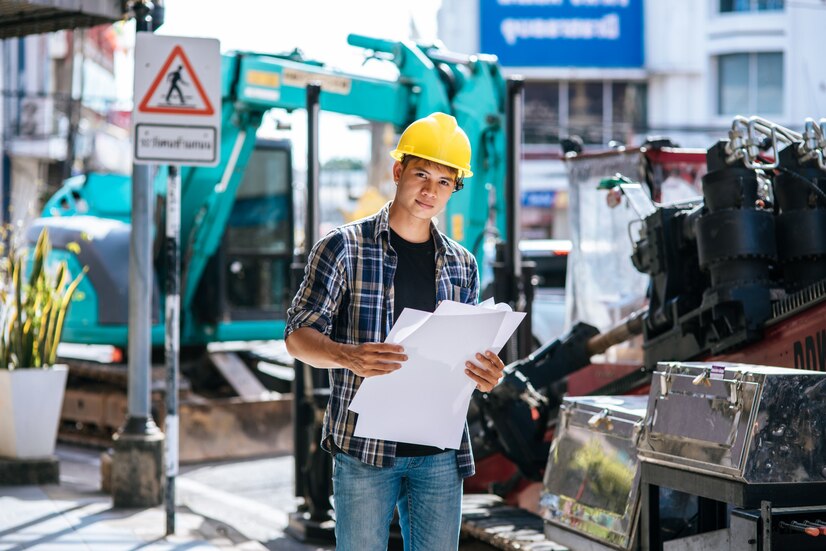In the ever-evolving landscape of construction and infrastructure development, demolition plays a crucial role in clearing space for new projects and repurposing existing structures. While the concept of demolition may evoke images of wrecking balls and controlled explosions, the reality is far more sophisticated in today’s technologically-driven era. Welcome to our exploration of “The Role of Technology in Modern Demolition: Advancements and Innovations. Advancements in technology have revolutionized the demolition industry, offering safer, more efficient, and environmentally-friendly methods. From precision-controlled machinery to cutting-edge materials recycling techniques, innovation has reshaped the way we approach demolitions. We’ll delve into the latest trends and breakthroughs shaping the landscape of modern demolition. We’ll explore how robotics and drones are being employed to access and dismantle structures in challenging environments, minimizing human risk and enhancing precision. Additionally, we’ll examine the role of data analytics and predictive modeling in planning and executing demolitions with unprecedented accuracy.
In the ever-evolving landscape of construction and engineering, one aspect stands out as particularly transformative: the integration of robotics into demolition practices. Once the stuff of science fiction, robotic technologies have now become a reality, reshaping the way we approach the dismantling of structures. From towering skyscrapers to intricate historical buildings, robots are increasingly taking center stage in demolition projects, offering unparalleled precision, efficiency, and safety. Let’s delve into this groundbreaking realm and explore how robots are revolutionizing demolition techniques.

Safety has always been a top priority in the construction industry, particularly in the high-risk environment of demolition sites. With the advent of new technologies and materials, as well as a greater emphasis on worker well-being, there has been a significant evolution in demolition equipment and protective gear. In this article, we’ll explore the latest advancements in safety measures designed to ensure the well-being of workers and the surrounding environment in demolition projects.
Personal protective equipment is the first line of defense for demolition workers, shielding them from hazards such as falling debris, dust, and chemical exposure. Recent advancements in PPE have focused on improving comfort, mobility, and effectiveness. For example, lightweight yet durable materials are now being used to construct helmets, vests, and goggles, reducing strain on workers while providing enhanced protection. Additionally, ergonomic designs and adjustable features ensure a better fit for individual users, maximizing comfort and safety on the job.
One of the most critical safety considerations in demolition work is respiratory protection. Dust, fumes, and airborne particles pose significant health risks to workers, potentially leading to respiratory ailments and long-term health issues. To address this challenge, advanced respirators and filtration systems have been developed to provide superior protection against harmful airborne contaminants. These devices utilize state-of-the-art filters and ventilation mechanisms to ensure that workers can breathe safely in even the most hazardous environments.
Working at height is an inherent part of demolition projects, making fall protection systems essential for ensuring worker safety. Traditional measures such as harnesses and lanyards have been enhanced with innovative features such as shock-absorbing technology and self-retracting lifelines, reducing the risk of injury in the event of a fall. Furthermore, advancements in anchor point design and installation methods have improved the reliability and effectiveness of fall arrest systems, providing peace of mind for workers operating at elevated heights.
In addition to personal protective equipment, technological innovations have also played a crucial role in enhancing safety on demolition sites. Remote monitoring systems, equipped with sensors and cameras, allow supervisors to oversee operations from a safe distance and intervene in case of emergencies. Similarly, real-time tracking devices worn by workers enable rapid response in the event of an accident or injury, facilitating swift medical assistance and rescue efforts. Furthermore, the integration of GPS and geofencing technology helps prevent unauthorized access to hazardous areas, reducing the risk of accidents and ensuring compliance with safety protocols.
Alongside advancements in equipment and technology, there has been a growing emphasis on training and education to promote a culture of safety in the demolition industry. Comprehensive training programs familiarize workers with potential hazards, proper use of equipment, and emergency procedures, empowering them to make informed decisions and mitigate risks on the job. Additionally, ongoing education and certification requirements ensure that workers stay up-to-date with the latest safety protocols and best practices, fostering a culture of continuous improvement and accountability.
The evolution of technology has significantly transformed the field of demolition, as evidenced by the advancements and innovations highlighted in this exploration. From sophisticated machinery to cutting-edge demolition techniques, the role of technology in modern demolition, exemplified by companies like JUNKAHAULICS in Raleigh, North Carolina, is undeniable. These technological advancements not only enhance efficiency and safety but also pave the way for more sustainable practices in the demolition industry. As technology continues to progress, it will undoubtedly shape the future of demolition, driving further innovation and redefining standards across the sector.


JUNKAHAULICS